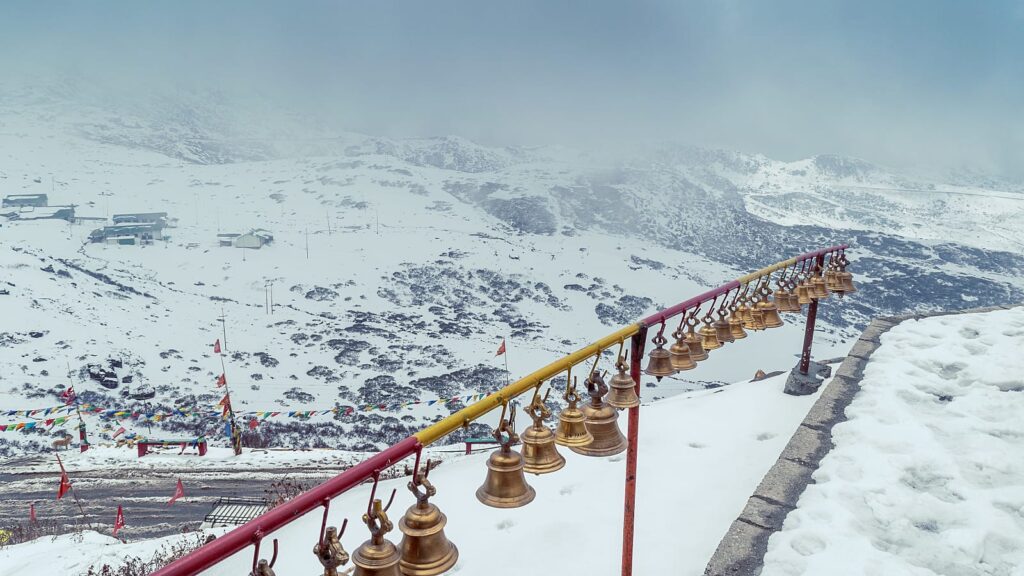Nathula, one of the highest motorable roads in the world, is a mountain pass in the Himalayan peaks that co-joins Sikkim and China. Situated on the Indo-Tibetan border 14450 ft. above sea level, Nathu La is one of the most important Himalayan passes in the country. Nathu means ‘listening ears’, and La means ‘pass’. Nathula is one of the three open trading border posts between India and China and is famous for its picturesque beauty and beautiful environment. The temperature here remains low for most parts of the year, and it becomes a hotspot for tourists during summer.
Nathula Pass Weather and Best Time to Visit
Nathula Pass experiences heavy snowfall during winter. The temperature of this area may drop down to -25 degrees Celcius. If you really love snow, you can visit Nathula Pass in winter with thick woollen garments. May to mid-November is the summer season when the temperature ranges around 10 degrees Celcius.
Nathula Pass Permit
Baba Harbhajan Singh Temple
Baba Harbhajan Singh Temple, or the Baba Mandir (as it is popularly called), is a small space consisting of two rooms and is a soldier’s bunker. One room has a desk and a chair with a placard requesting people not to sit on Babaji’s chair. The other room has a single bed, a thick blanket and an altar for the worshippers to place offerings. There is also an army uniform and a pair of polished boots kept under the bed. The person who comes to clean the samadhi sometimes finds the uniform crinkled or the boots muddy. Yes, eerie isn’t it?!
Flora and Fauna at Nathula
Fauna: Nathu La Pass is home to various animals and birds which include Pashmina-type goats, Tibetan herd Yak and Sheep. It also includes endangered species like Tibetan Gazelle, Snow Leopard, Tibetan Wolf, Tibetan Snowcock, Golden Eagle and Raven. Pheasants such as Monals and Blood Pheasants are also found.
History of Nathula
Since it is one of the three open trading border posts between India and China, Nathu La Pass has played a key role in the Sino-Indian Trade. It has also shortened the distance between the important Buddhist and Hindu pilgrimage sites, thus strengthening the economy and improving border relations with China.
Geography and Climate
There is no meteorological incentre in Nathu La Pass, a systematic measurement of meteorological data is not available in that region. However, in the higher portion of The Himalayas around that region, the summer temperature does not exceed beyond 15 degrees Celsius. To preserve the fragile environment of Nathu La Pass on the Indian side, the Government of India regulates the flow of tourists and the roads are maintained by Border Roads Organization, a wing of the Indian Army.
How to reach Nathula Pass
- Air: The closest airport to Nathula is Bagdogra airport and it is connected to cities like Delhi and Kolkata. From there you can hire a taxi to reach Gangtok, which is well connected to Nathula by road.
- Rail: The nearest railway station is in Jalpaiguri, 98 kilometers from Gangtok. You can take a taxi from here to reach Gangtok.
- Road: Nathula is well connected by road to Gangtok. You can take a taxi from Gangtok to reach Nathula.






Be the first to write a comment.